Im Freien zu singen
Songs, intended to be performed outdoors by Felix Mendelssohn Bartholdy
Mendelssohn tried to put the romantic idea of letting choral songs sound outdoors into practice more than once. In a letter dated July 3, 1839, he described how he had sung with a choir deep in the forest. “How lovely the song sounded, how clearly the sopranos trilled in the air, and what a glow and charm enveloped all the pitches, everything so quiet and furtive and yet so clear – that I couldn’t have imagined … it was magical in the forest solitude, so that tears almost came to my eyes. It sounded like pure poetry.” Learn more about the still little known choral songs of Felix Mendelssohn Bartholdy in this article by Mendelssohn expert R. Larry Todd.
Deservedly or not, the choral songs of Felix Mendelssohn Bartholdy (1809–1847) remain among his lesser-known compositions, even though they form a not insignificant part of his oeuvre. All told, he produced seventy-one examples, divided between thirty-three for mixed chorus and thirty-eight for male chorus. The earliest survives from 1820, while the last dates from 1847, so that Mendelssohn effectively remained occupied with the genre throughout his career. That said, of the surviving part songs, the ever-scrupulous composer released only twenty-four in print in four volumes (Opp. 41, 48, 50, and 59), while another fourteen waited to appear posthumously (Op. 75, 88 and 100). But nearly half were left in manuscripts, and of those several remain unpublished to this day.
All audio samples from:
Mendelssohn: Lieder
im Freien zu singen
Kammerchor Stuttgart, Frieder Bernius
CD Carus 83.287
Mendelssohn wrote a few mixed part-songs for special occasions, including, in 1828, the birthday of his composition teacher, Carl Friedrich Zelter (Lasset heut am edlen Ort, on a text by Goethe); in 1829, to celebrate the abolition of slavery in the island of Ceylon (The Sun is Dancing on the Streams, the music of which is lost); in 1845, the funeral of the amateur singer Theodor Zimmermann (Sahst du ihn herniederschweben, published posthumously as Op. 116); and, again in 1845, a Schiller festival held in Leipzig (Die Frauen und die Sänger). Of the male part-songs, one was written around 1826 as a Schwimmlied (Stromübergang; according to Eduard Devrient, Mendelssohn composed several Schwimmlieder, though they have not survived); another in 1832 for a Freemason lodge in Weimar (Öffnet euch, geweihte Pforten); a third in 1833 for a Dürer Festival in Düsseldorf (Musikantenprügelei); and a fourth in 1837 to discharge a wager Mendelssohn owed to the Frankfurt jurist Franz Bernus (Süße Düfte, milde Lüfte freundlich uns umziehn). But the vast majority of the Lieder were destined for impromptu, domestic music making, and for the burgeoning Liedertafeln and other groups of the time that celebrated the rise of amateur choral singing.
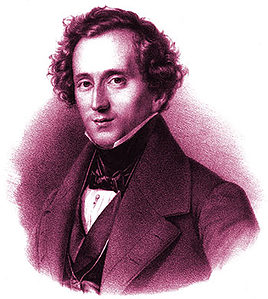
Throughout his career, Mendelssohn occupied himself with the genre of choral song
Throughout his short career, Mendelssohn was in high demand as a choral conductor. He was, of course, instrumental in reviving and performing the major choral masterpieces of J. S. Bach, Handel, and Haydn at large-scale public music festivals that amassed hundreds of performers. But the part songs, in contrast, aspired to an intimate form of artistic expression Mendelssohn viewed as the most natural type of music, as he explained in a letter of 1 August 1839 to his friend Karl Klingemann:
I’d like to continue with 4-part songs, for I have imagined many that can be made in this genre, and the most natural music is when 4 people go walking together, in the forest, or in a skiff, and immediately carry the music with them and in them. … But send me a song or a pair, to be sung in autumn, or better yet in summer, or in spring, on the water or in a meadow or on a bridge, or in a forest or garten. …
Mendelssohn cast the majority of these pieces in simple strophic settings, in which he simply reused and repeated music for one stanza in subsequent stanzas. Only on occasion did he opt for different formal solutions, for example, by introducing contrasting music for an internal stanza (Mailied, Op. 41 No. 5 and Auf dem See, Op. 41 No. 6), or designing the setting as a playful canon (Lerchengesang, Op. 48 No. 4, and Die Nachtigall, Op. 59 No. 4). Accompanying the tendency for simple designs was his preference for straightforward homophonic textures to maximize the accessibility of the music. With the exception of the rare canonic writing (Mendelssohn was of course a master contrapuntist more than capable of dispatching complex fugues and challenging canons), the part songs betray at the most only short passages of imitative writing that offer some variety from the predominantly chordal textures. In a similar way, Mendelssohn generally drew the harmonic vocabulary of his part songs from the diatonic sonorities of the principal key; he applied chromatic inflections relatively rarely, usually in response to textual determinants, as in Im Walde, Op. 41 No. 1 (“Ich fühle mich im Herzen krank”), Ruhetal, Op. 59 No. 5 (“frag ich oft mit Tränen”), or the iconic Abschied vom Walde, Op. 59 No. 3 (“Da draußen, stets betrogen, saust’ die geschäft’ge Welt”), a work so popular it took on the status of a folk song.
Composed between 1834 and 1837, the first volume of part songs appeared from Breitkopf & Härtel in 1838 as Op. 41. Mendelssohn intended them to be performed outdoors, and so added as a subtitle, im Freien zu singen. The opus falls into two groups: Nos. 1–4 are strophic, and are unified by their alternating key sequence (A major, E major, A minor, and E major), while Nos. 5–6 introduce contrasting music for internal stanzas, and are set in unrelated keys (B-flat major and C major). Throughout the opus the music aspires toward the artlessness of folksong; indeed, Mendelssohn sequestered the three Heine settings (Nos. 2–4) as Drei Volkslieder. The texts celebrate nature as a colorful canopy that envelops and yet is free of human affairs: in No. 1 (Im Walde), twittering birds are oblivious to human sorrows (“und lasst die Menschenseufzen, ach! in ihrem Vogelbauer”); in No. 4 (Auf ihrem Grab), a linden tree grows above the grave of lovers; in No. 5 (Mailied), spring erupts in Mai; and in No. 6 (Auf dem See), a traveler finds nourishment and new blood in the “free” world. The last Lied takes for its text the celebrated poem written by the young Goethe in 1775 after visiting and rowing on Lake Zurich. A member of Goethe’s intimate circle, Mendelssohn took special care with this setting, and modified a strophic design to offer fresh music for an internal stanza, in which the protagonist briefly experiences golden dreams of love before the music of the opening resumes.
Two more volumes of mixed choral songs, Op. 48 and 59, followed in 1840 and 1843, released, like Op. 41, by Breitkopf & Härtel in Leipzig, the principal publisher of the composer, who carefully arranged the order of the pieces and saw them through the press. In contrast, the final two volumes, Op. 88 and 100, appeared posthumously in 1851 and 1852 – they were chosen and assembled by the publisher from separate manuscripts in Mendelssohn’s estate, and thus he played no role in culling them and shaping them into coherent collections.
Of the poets Mendelssohn set, Uhland, Eichendorff, Goethe, Heine, and Lenau stand out with six, five, three, three, and two settings, respectively. There are no surprises here, for Mendelssohn favored the romantic lyrics of these poets in his solo Lieder and duets as well. Other poets represented with single settings in the mixed choral songs include Platen, Hölty, Helmina von Chézy, Geibel, and Fallersleben. In at least one case, Im Wald, Op. 100 No. 4 originally considered for inclusion in Op. 48, Mendelssohn was at first dissatisfied with the verses of Heinrich Weissmann, and possibly altered them himself, or authorized their alteration. Writing to Breitkopf & Härtel on 30 December 1839, he noted,
Its words don’t please me enough for publication; if you can set below other, attractive words (but of course the theme must remain the same – everything must concern a forest and greenery, and where possible each strophe must begin ‘im Wald’), then in my opinion there could well be a seventh song, even though the first volume only had 6.
That Mendelssohn would insist the theme of his song center on the forest and its greenery is consistent with his conception that the music be enjoyed outdoors, as if in communion with nature. Indeed, on probably more than one occasion the composer tried to realize his vision by performing his choral songs in a sylvan setting. One compelling description survives in a letter he wrote to his mother from Frankfurt on 3 July 1839, after joining a chorus of twenty amateurs deep in a forest not far from the city:
How lovely the song sounded, how clearly the sopranos trilled in the air, and what a glow and charm enveloped all the pitches, everything so quiet and furtive and yet so clear – that I couldn’t have imagined. There was a chorus of 20 good voices, but during a rehearsal indoors there were several mistakes, and everything had become unsure. But during the evening when they arranged themselves beneath the trees, and lifted up my first song, ‘ihr Vöglein in den Schwanken zank’ [Op. 41 No. 1], it was magical in the forest solitude, so that tears almost came to my eyes. It sounded like pure poetry.

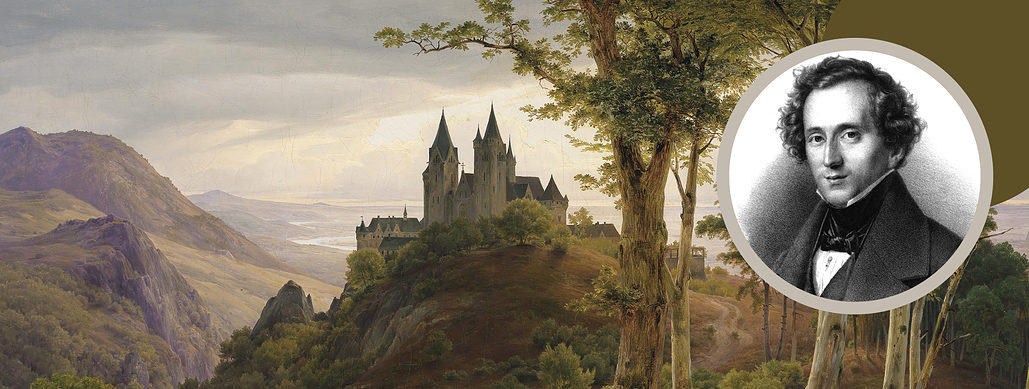

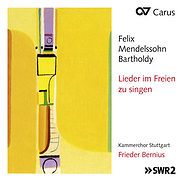
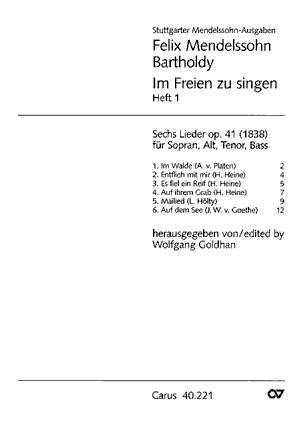
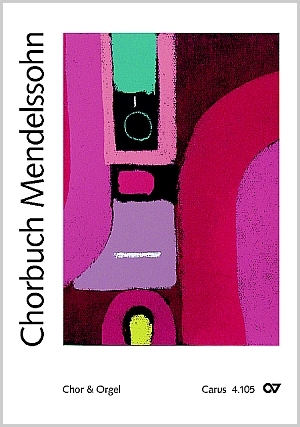


Leave a Reply
Want to join the discussion?Feel free to contribute!